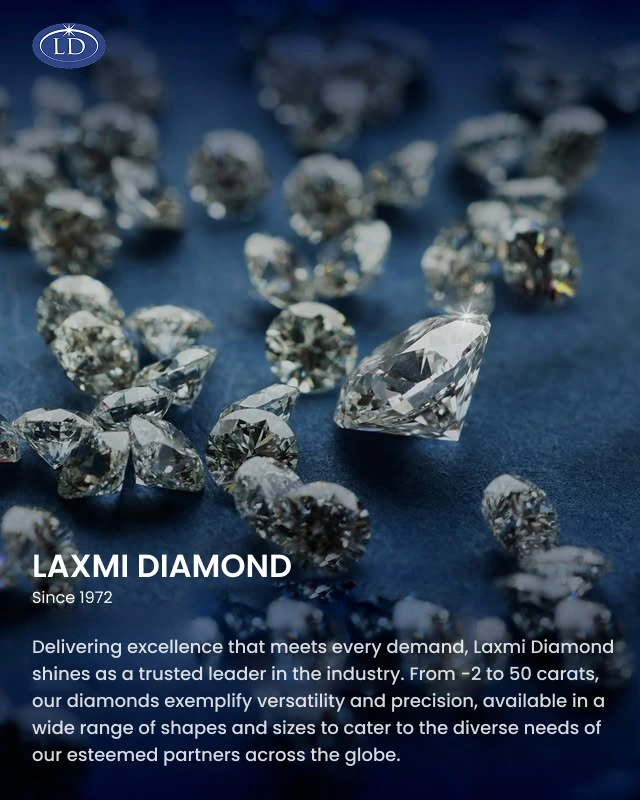
Must-Know Glossary Terms In The Gemstone World
The world has adored diamonds for centuries as eternal symbols of prestige, love and luxury. However, while the passion for these gemstones is common, the precise know-how for them is not. Because of the same reason, making a diamond purchase can be complicated and overwhelming at times.
A diamond's characteristics, attributes, and intricacies extend beyond the four C's of cut, colour, clarity, and carat, which are just a starting point. And after all, a diamond is much more than a piece of jewellery. It adds to a person's life as a cherished investment. Therefore, a better understanding and know-how of the details of a diamond can help add value to one's choice and make the diamond buying process less complicated.
Commonly Used Essential Diamond Terms
Abrasion:
All diamonds are bound to come with their imperfections. While some of those might significantly affect a diamond's quality, other marks are very minute and do not alter the gemstone in any way. Similarly, abrasion is a small scratch on a diamond's surface that appears as a series of tiny nicks on the facets.
Blemish:
All imperfections present in a diamond, recognisable or not, significant or minute, are referred to as blemishes. So naturally, a diamond with minimum flaws is more valuable and costs higher than a diamond of the same carat weight with minor blemishes.

Brilliance:
Often confused as the diamond's sparkle, brilliance is a critical attribute. The overall strength of a diamond to emit and return white light collectively form its' brilliance. Factors such as polish, clarity, proportions, and symmetry essentially contribute to a diamond's brilliance.
Carat Weight:
Carat is the universally accepted unit of measurement for the weight of diamonds. One carat is equal to 0.2 grams (200 milligrams). Therefore, a diamond's value is directly proportional to its carat weight.

Clarity:
One of the essential attributes of a diamond, clarity, is one of the 4C's. It is a rating that assesses and describes the absence/presence or the extent of blemishes and inclusions in a diamond. The clarity grades range from FL to I3.
Cloud:
As the name suggests, the cloud is a form of diamond inclusion that makes the gemstone appear milky and hazy. It is often a semi-transparent area created with minute inclusions. Most cloud deformations in a diamond are invisible to the naked eye.
Crown:
The upper portion of a diamond above the girdle with an angled edge is the crown of a diamond. The crown angle can have a significant impact on the diamond's face-up appearance.
Cutlet:
Cutlet is a tiny facet added at the bottom pavilion of a diamond. It protects the tip and prevents the diamond from being damaged or chipped. Cutlets are pretty common but not essentially present in all diamonds.
Cut Grade:
A diamond's cut contributes significantly to its value and, therefore, is an essential grading factor. Cut grade is the ranking based on a diamond's symmetry, polish and proportions that determine its cut.

Depth:
The height of a diamond, measured from its cutlet to its table, in millimetres is its depth. Therefore, a diamond grading report usually specifies two dept measurements for a gemstone. One states the actual depth in millimetres, and the other indicates the diamond depth percentage with its width.
Facet:
A very commonly used term in the gemstone world, facets contribute significantly in reshaping a stone like a diamond. Thus, aA diamond's flat and polished surfaces are known as its' facets. Typically, diamonds with more facets emit more brilliance.

Fire:
Another significant factor contributing to a diamond's appearance, fire, is a striking phenomenon. Diamond fire is the effect of flashes of colour lights radiating from a diamond while the gemstone is in motion under light exposure.
Fluorescence:
Again, one of the factors that add to a diamond's everlasting shine is fluorescence. These gemstones can emit visible light under exposure to the Ultra-violet spectrum of light. Fluorescence grading in diamonds ranges from None to Very strong.
Girdle:
A very commonly heard term in the gemstone world, a girdle is an essential part of the diamond. It is the outer edge that appears as an outline of a diamond. It separates the crown from the pavilion section and varies in thickness for different diamond shapes.
Inclusions:
Inclusions are all the internal imperfections and flaws found in a diamond. These vary in appearance and size and may or may not necessarily be visible to the naked eye.
Pavillion:
It is the lower point and portion of a faceted diamond seen below the girdle. The anatomy of a pavilion is usually visible in a uniformly cut "V" shape, meeting at an intersecting angle to ensure the right shape and shine.

Sparkle:
In standard terms, sparkle is often confused as a shiny or glittery effect. However, in the gemstone world, the fire and brilliance of a diamond collectively form its sparkle. It is the amount of reflected light that radiates from the gemstone's surface.

Scintillation:
A phenomenon that includes both fire and brilliance, scintillation is noticeable when a diamond is in motion. It is visible as the mirror-like reflection from a diamond's facet under motion and exposure to light.
Symmetry:
A diamond's cut and shape are quite significant for the determination of its' overall value. And symmetry largely contributes to these factors. It measures the overall proportion and uniformity of a stone and ranges from poor to ideal.
Table:
Again an essential part of the gemstone, a table, is the flat facet on the top of a diamond. It is always the most significant facet for diamonds of all cuts and shapes
The Importance Of Knowing Your Gemstone
Laxmi Diamond truly believes that diamonds are much more than just jewels and an integral part of the owner's life. And therefore, should be chosen and bought with careful consideration.
And thus, precise know-how of the gemstone world helps understand a diamond beyond the 4C's and contributes significantly while selecting the suitable stone for investing one's sentiments.








